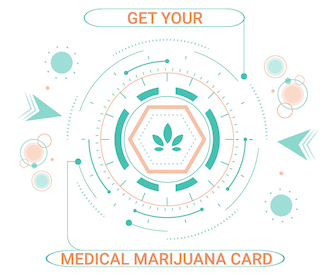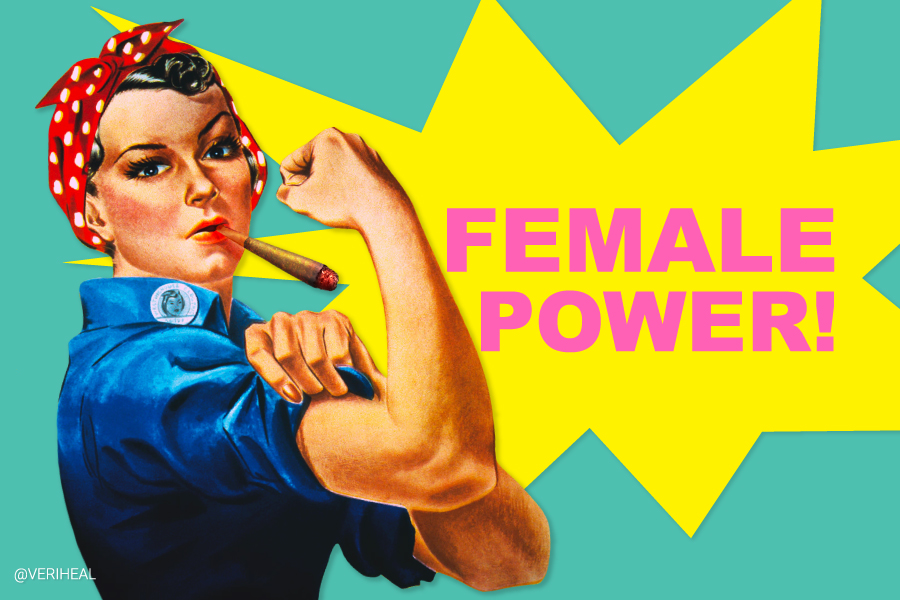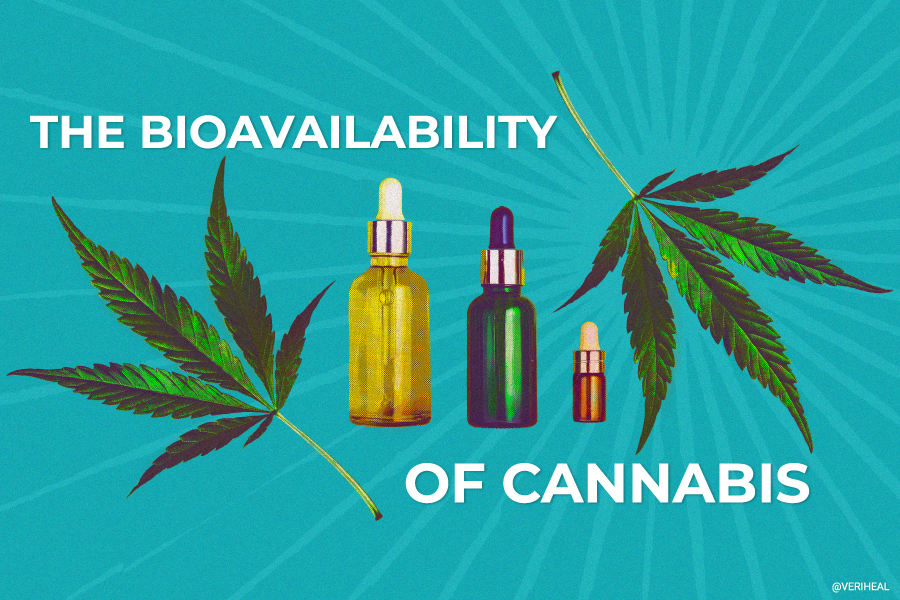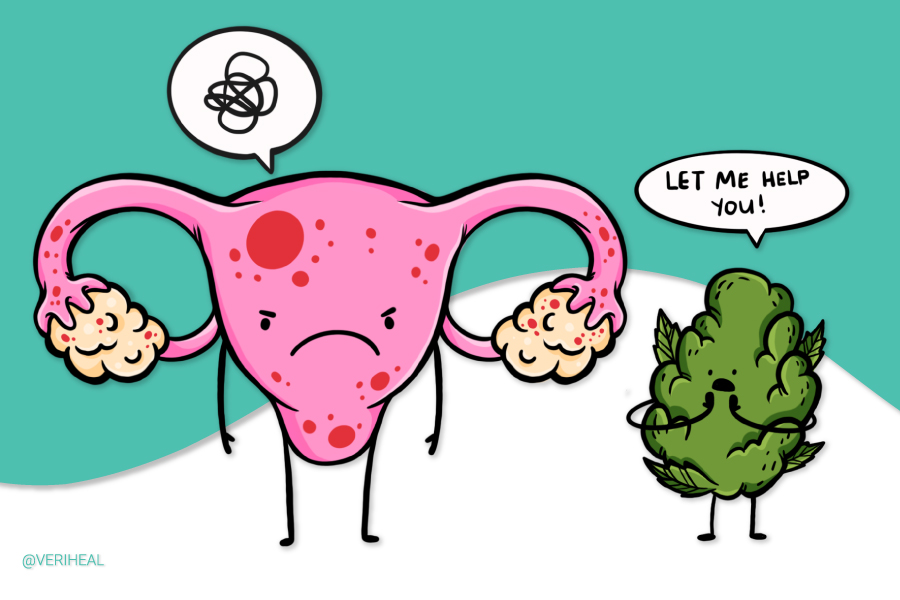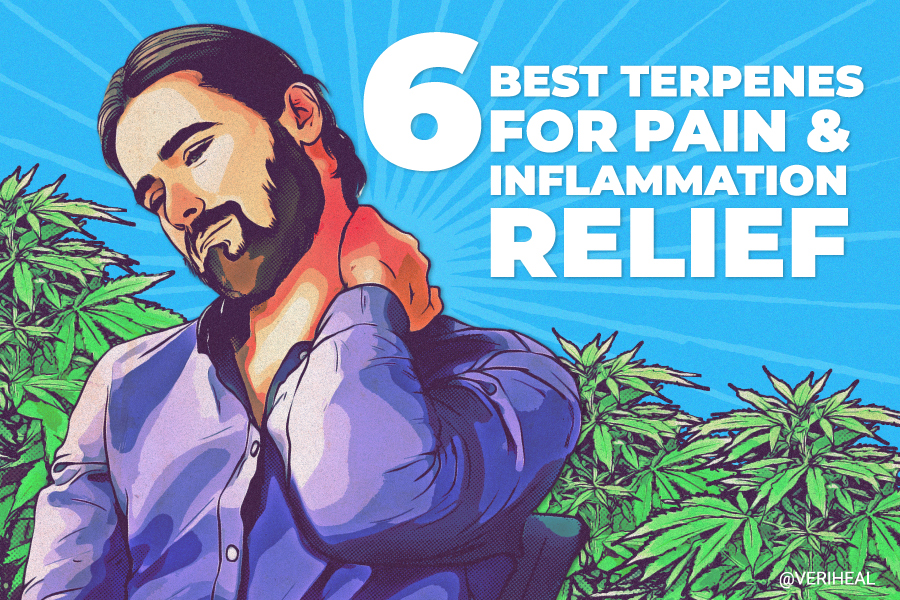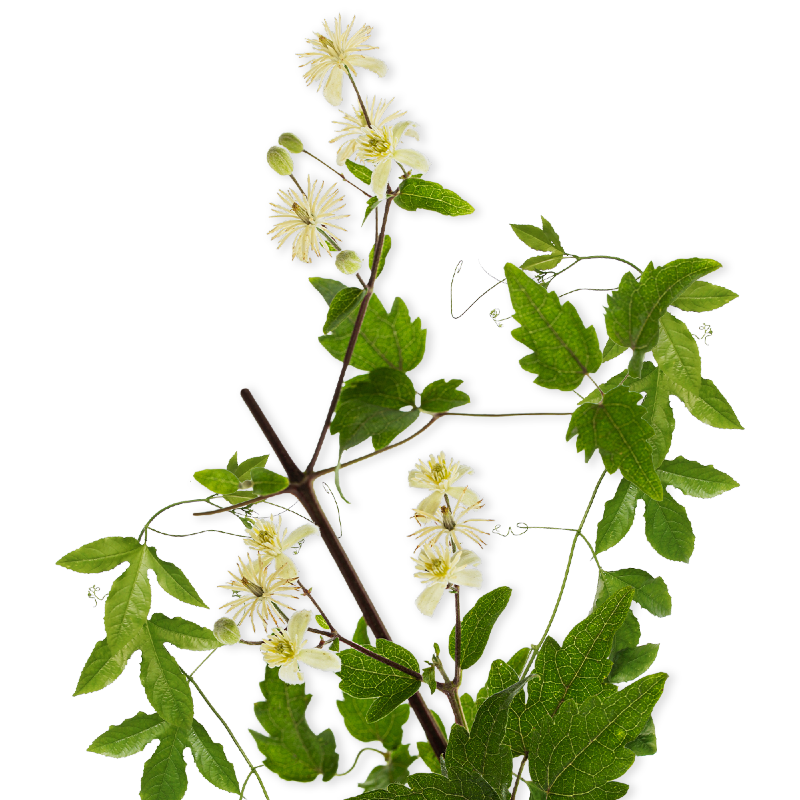Medical Marijuana and Vaginismus: Can Patients Benefit?
- Vaginismus Signs, Symptoms and Types
- Vaginismus Treatment: Can Cannabinoids Provide Relief?
- The Role of the Endocannabinoid System in Treating Vaginismus
- What Preparations of Cannabis are Best for Vaginismus?
- Talking to Your Doctor About these Types of Treatments
Scientists have discovered that pain is processed in the same brain circuits that produce feelings of pleasure, but we all know which area of the brain we’d like to stimulate the most… the pleasure pathways! Although pain and pleasure can be simultaneous, you know you’ve got a problem when pain overshadows pleasure – something that many women with vaginismus will experience.
People who endure vaginismus may find themselves engulfed with embarrassment and shame. Often referred to as “hitting a wall”, vaginismus is defined as a genito-pelvic pain/penetration disorder as per the Diagnostic and Statistical Manual of Mental Disorders, Fifth Edition, Text Revision (DSM-5-TR).
Based on statistics published in the updated clinical e-book StatPearls, up to 30% of women deal with discomfort or pain when they have sex during their lifetime (12). Vaginismus affects approximately 1% of the female population at any given time and in a clinical setting, the prevalence rate of vaginismus rests at around 5% to 17% (10, 1)
Unlike other medical conditions, vaginismus is not as widely spoken about even though it is a more common condition in younger women. The good news is that people are talking about medical marijuana which, pending further research, may be a viable treatment option for people with vaginismus. There are still no direct studies on cannabis for vaginismus, however, current research on pain and spasticity are encouraging.
Vaginismus Signs, Symptoms and Types
Of all the female sexual dysfunctions that exist, vaginismus is believed to be one of the more common conditions. Since many women are unwilling to talk about their symptoms with healthcare professionals due to stigma, vaginismus is widely undiagnosed.
Due to the inconveniences and pain that can arise in a woman’s life when she suffers from vaginismus—such as extreme difficulty attending routine gynecologist appointments and examinations, inserting tampons, and having a normal sex life—it’s common for the patient to experience bouts of depression.
Vulvovaginal pain is a common symptom of vaginismus. Some other common signs of vaginismus include:
- Difficulty inserting a tampon into the vagina
- Inability to undergo GYN examinations
- Inability to accept penetration
- Involuntary pelvic muscle tightness causing discomfort and pain during sex (2)
Gynecologists can diagnose two main types of vaginismus – primary and secondary. Let’s take a look at what differentiates the two:
- Primary Vaginismus – Women who receive a diagnosis for primary vaginismus have never had non-painful penetrative intercourse due to involuntary contractions of the vaginal muscles. Penetrative intercouse has always been painful, if tried.
- Secondary Vaginismus – When a biological female has previously been able to have sexual intercourse, but can no longer enjoy the experience due to spontaneous muscle spasms, they will be diagnosed with secondary vaginismus.
Vaginismus Causes and Complications
Although vaginismus is considered to be one of the most common female psychosexual dysfunctions on the planet, doctors have not yet determined the root cause. Nonetheless, a number of risk factors may increase a woman’s chances of developing vaginismus, such as:
- Childbirth-related injuries, e.g. vaginal tears
- Vaginal infections and pain syndromes including endometriosis
- Previous genital surgeries
- Anxiety about penetration, pain, or pregnancy
- Different psychological factors, such as sexual abuse and trauma, strict religious and/or strict sexual upbringing, fear and/or anxiety issues (5)
Vaginismus is a common cause of, but should not be confused with, dyspareunia – a lingering and intense pain that arises before, during, and/or after vaginal penetration. Dyspareunia has a wide variety of different causes other than vaginismus that they can be confused with or misdiagnosed. However, many women who endure dyspareunia also have a vaginismus diagnosis. Vulvar vestibulitis syndrome (VVS) is believed to be the primary cause of dyspareunia in pre-menopausal women (3).
Furthermore, some of the symptoms of vaginismus are similar to vaginal atrophy. Otherwise known as ‘atrophic vaginitis’, vaginal atrophy causes dryness and inflammation. It tends to arise in individuals whose bodies produce less estrogen, e.g. in post-menopausal women. Due to a lack of estrogen, the vaginal walls become dry, thin, and inflamed, thus resulting in painful penetrative sex; similar to the symptoms of vaginismus. However, vaginismus always features involuntary pelvic floor muscle spasms and is more common in younger women.
Vaginismus Treatment: Can Cannabinoids Provide Relief?
Vaginismus represents a global health issue that can impose a heavy burden on a female’s quality of life, not to mention their bank balance. Treatment prices vary widely depending on the type of treatment.
However, it is not uncommon for women to spend thousands of dollars for a single session of fractional CO2 laser and RF-based technology. This particular type of treatment is designed to improve moisture in the vagina’s mucosal lining.
As a condition that affects females on a physical and psychological level, vaginismus treatment can be complex. One of the most commonly tried-and-tested types of treatment for vaginismus involves the use of botox injections, which work by relaxing the spastic vaginal muscles that prevent painless penetration.
Treatment of vaginismus with botulinum toxin injections dates back to 1997, when the first ever case report on the subject was published in the National Library of Medicine (4). Intravaginal botox administration, combined with progressive dilation under anesthesia, has demonstrated success in treating vaginismus.
For example, a clinical trail conducted in 2017 with 241 participants had promising outcomes with 171 participants (71%) reported having pain-free intercourse at a mean of 5.1 weeks. In the conclusion the researchers noted that, “a multimodal program that treated the physical and psychologic aspects of vaginismus enabled women to achieve pain-free intercourse (10).”
In regards to cannabis, a survey of 452 women published in the journal Sexual Medicine in 2020 revealed that cannabis may amplify sex drive and boost sexual pleasure in a multitude of ways (7). Specifically, frequent cannabis use contributed to improved pain, orgasm, sexual satisfaction, arousal, and desire. Unfortunately, these survey results were not significant for improvements in self-reported lubrication or pain scores.
The findings were drawn up after Stanford University researchers utilized the Female Sexual Function Index (FSFI). Increased FSFI scores were observed among 452 females who used medical marijuana on a regular basis. This survey is significant because it “is the first to use a validated questionnaire to assess the association between female sexual function and aspects of cannabis use including frequency, chemovar, and indication.” The vast majority of females – all of whom were recruited at partnering dispensary locations via QR code links, as opposed to doctor’s offices – reported a decline in sexual dysfunction.
Interestingly, this decline was related to increasing the frequency (number of times per week) of cannabis use. The type of chemovar (formerly called “strains”) or method of cannabis consumption (edibles, tinctures, smoking, or vaping) did not make a difference in any of the results. Of note, there were no results from vaginal suppositories reported.
Separate studies, such as this one, have shown that in certain circumstances cannabis and cannabidiol (CBD) are natural vasodilators, meaning that the plant is capable of opening the blood vessels (11). Because of this natural superpower, it is thought that the genitals receive a surge of blood flow post-consumption, thus resulting in increased sexual arousal and sensitivity. However, other surveys on women’s health show either no or conflicting effects on cannabis use and pain, dysfunction, or lubrication during sex (6).
In other contexts, cannabis is a known natural anti-inflammatory and natural form of pain relief, suggesting that the plant may benefit vaginismus patients who struggle with inflamed and painful vaginal walls. What’s more, cannabis’ ability to interact with skin receptors makes consumers more sensitive to physical touch during sexual experiences.
The lack of data in these specific regards calls for further research to evaluate cannabis’ role in women’s health including dyspareunia, sexual function indicators, and vaginal suppositories which are all understudied.
The Role of the Endocannabinoid System in Treating Vaginismus
During the early 1990s, researchers identified a complex cell-signaling system called the ‘endocannabinoid system’, or the ‘ECS’ for short. This intricate group of neuromodulatory lipids and receptors is responsible for regulating and controlling the body’s essential functions, including sleep, mood, memory, hunger, and female sexual behavior (7).
Composed of cannabinoid receptors, endogenous cannabinoids (endocannabinoids) and endocannabinoid metabolic enzymes, the ECS ensures homeostasis. It contains two main receptors – CB1 receptors (mostly found in the brain) and CB2 receptors (found in other parts of the body) (8).
While delta-9 tetrahydrocannabinol (THC)—which can alleviate pain and muscle spasms in vaginismus patients—is capable of binding to both CB1 and CB2 receptors. Meanwhile, CBD indirectly influences CB and other receptors through a process called ‘pleiotropy’. Pleiotropy means that CBD can act at different locations at the same time. CBD can also stop FAAH, the enzyme that breaks down our natural endocannabinoids, and increase them.
CBD products may reduce the psychological potency of THC, but studies have shown that this non-psychoactive cannabinoid harbors additional analgesic, anticonvulsant, anxiolytic, antipsychotic, neuroprotective, antioxidant, and anti-inflammatory properties (9).
What Preparations of Cannabis are Best for Vaginismus?
Cannabis is one of the most diverse plants on the planet. Aside from the fact that there are over 800 “strains” (yet to be categorized into chemovars by researchers) cannabis can be consumed/used in a number of different ways for improved overall sexual health and wellness.
When it comes to treating vaginismus with cannabis, inhaling cannabinoids by vaping or smoking may prove beneficial for fast-acting chronic pain relief. Alternatively, ingested cannabis, such as oil-infused edibles, may provide longer-lasting relief (up to eight hours) from deep pelvic pain.
Since cannabinoid receptors can be found in the skin, topical or transdermal cannabinoids may also help with localized relief from penetrative pain.
Vaginal suppositories may be able to deliver localized effects with a greater concentration of cannabinoids being directly applied. So far, there isn’t enough research to distinguish or determine the exact benefits of each of these methods in regards to vaginismus.
Talking to Your Doctor About These Types of Treatments
Talking about vaginismus can leave a woman feeling uneasy, self-conscious, and, in many instances, red in the face! To avoid humiliation, many women will hide their anguish and suffer silently. Although it can be difficult to ask for help with treating vaginismus, it’s important to take the first step and contact a doctor. Vaginal pain could also be something more serious and needs an appropriate workup by your provider.
Keep in mind that an official vaginismus diagnosis can only be specified by a trained and licensed primary care physician, family doctor, or gynecologist. Doctors who specialize in female reproductive health will be able to educate you on the subject, as well as point you in the right direction in terms of treatment options.
Should you be interested in trying to relieve the symptoms of vaginismus with medical cannabis, you must first obtain a recommendation from a qualified physician. A good first step would be to check your state’s list of qualifying conditions, before consulting with the Veriheal team, who can connect you with a licensed cannabis physician.
Complementary Treatments Worth Discussing with Your Doctor
Don’t limit yourself to the aforementioned treatments when trying to alleviate the side effects of vaginismus. When combined with complementary treatments, you can potentially speed up the process of treating this sexual pain disorder and get your sex life back on track.
Examples of complementary treatments worth discussing with your doctor include exercising the pelvic floor muscles, dilator therapy, reiki, psychotherapy (CBT), couples/sex counseling, hypnotherapy, anti-depressants, anti-anxiety drugs, guided/visualization meditation, hymenectomy, and vestibulectomy.
Wondering if you qualify to use medical cannabis for vaginismus?. Our aim is to connect patients with cannabis physicians who are licensed to recommend medicinal cannabis in their specific state.
Contact us today for more information.
Note: The content on this page is for informational purposes only and is not intended to be professional medical advice. Do not attempt to self-diagnose or prescribe treatment based on the information provided. Always consult a physician before making any decision on the treatment of a medical condition.
1. Achour, R., Koch, M., Zgueb, Y., Ouali, U., & Rim, B. H. (2019). Vaginismus and pregnancy: Epidemiological profile and management difficulties. Psychology Research and Behavior Management, Volume 12, 137–143. https://www.ncbi.nlm.nih.gov/pmc/articles/PMC6419599/#:~:text=Vaginismus%20affects%20up%20to%201,of%20an%20underlying%20psychological%20problem
2. Aman, Goswami, M., & Leli, K. (2022, April 27). Vulvodynia, vestibulodynia, and vaginismus: What’s the difference? Pelvic Health and Rehabilitation Center. Retrieved August 8, 2022, from https://pelvicpainrehab.com/female-pelvic-pain/vulvodynia-female-pelvic-pain/5458/ten-things-you-need-to-know-about-vulvodynia-vestibulodynia-and-vaginismus/
3. Bergeron, S., Binik, Y. M., Khalifé, S., & Pagidas, K. (1997). Vulvar Vestibulitis syndrome: A critical review. The Clinical Journal of Pain, 13(1), 27–42. https://pubmed.ncbi.nlm.nih.gov/9084950/
4. Brin, M. F., & Vapnek, J. M. (1997). Treatment of vaginismus with botulinum toxin injections. The Lancet, 349(9047), 252–253. https://pubmed.ncbi.nlm.nih.gov/9014917/
5. Healthdirect Australia. (n.d.). Vaginismus. healthdirect. Retrieved August 8, 2022, from https://www.healthdirect.gov.au/vaginismus
6. Kasman, A. M., Bhambhvani, H. P., Wilson-King, G., & Eisenberg, M. L. (2020). Assessment of the association of cannabis on female sexual function with the female sexual function index. Sexual Medicine, 8(4), 699–708. https://www.smoa.jsexmed.org/article/S2050-1161(20)30086-6/fulltext
7. Klein, C., Hill, M. N., Chang, S. C. H., Hillard, C. J., & Gorzalka, B. B. (2012). Circulating endocannabinoid concentrations and sexual arousal in women. The Journal of Sexual Medicine, 9(6), 1588–1601. https://www.ncbi.nlm.nih.gov/pmc/articles/PMC3856894/
8. Lu, H.-C., & Mackie, K. (2016). An introduction to the endogenous cannabinoid system. Biological Psychiatry, 79(7), 516–525. https://www.ncbi.nlm.nih.gov/pmc/articles/PMC4789136/#:~:text=The%20ECS%20is%20comprised%20of,and%20degradation%20of%20the%20endocannabinoids
9. National Center for Biotechnology Information (2022). PubChem Compound Summary for CID 644019, Cannabidiol. Retrieved August 8, 2022 from https://pubchem.ncbi.nlm.nih.gov/compound/Cannabidiol.
10. Pacik, P. T., & Geletta, S. (2017). Vaginismus treatment: Clinical trials follow up 241 patients. Sexual Medicine, 5(2). https://www.ncbi.nlm.nih.gov/pmc/articles/PMC5440634/#:~:text=The%20prevalence%20rate%20of%20vaginismus,more%20prevalent%20female%20sexual%20dysfunctions
11. Richter, J. S., Quenardelle, V., Rouyer, O., Raul, J. S., Beaujeux, R., Gény, B., & Wolff, V. (2018). A systematic review of the complex effects of cannabinoids on cerebral and peripheral circulation in animal models. Frontiers in Physiology, 9. https://www.frontiersin.org/articles/10.3389/fphys.2018.00622/full
12. Tayyeb M, Gupta V. Dyspareunia. [Updated 2022 Jun 11]. In: StatPearls [Internet]. Treasure Island (FL): StatPearls Publishing; 2022 Jan-. Available from: https://www.ncbi.nlm.nih.gov/books/NBK562159/



